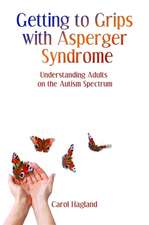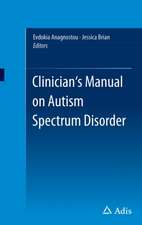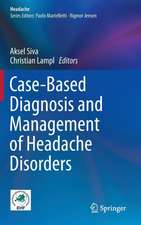Early Diagnosis and Preventive Therapy in Parkinson’s Disease: Key Topics in Brain Research
Editat de Horst Przuntek, Peter Riedereren Limba Engleză Paperback – 30 dec 1988
Preț: 376.78 lei
Preț vechi: 396.62 lei
-5% Nou
Puncte Express: 565
Preț estimativ în valută:
72.09€ • 75.27$ • 59.67£
72.09€ • 75.27$ • 59.67£
Carte tipărită la comandă
Livrare economică 05-19 aprilie
Preluare comenzi: 021 569.72.76
Specificații
ISBN-13: 9783211820803
ISBN-10: 3211820809
Pagini: 464
Ilustrații: XIV, 447 p.
Dimensiuni: 152 x 229 x 24 mm
Greutate: 0.62 kg
Editura: SPRINGER VIENNA
Colecția Springer
Seria Key Topics in Brain Research
Locul publicării:Vienna, Austria
ISBN-10: 3211820809
Pagini: 464
Ilustrații: XIV, 447 p.
Dimensiuni: 152 x 229 x 24 mm
Greutate: 0.62 kg
Editura: SPRINGER VIENNA
Colecția Springer
Seria Key Topics in Brain Research
Locul publicării:Vienna, Austria
Public țintă
ResearchCuprins
The premorbid personality of patients with Parkinson’s disease.- Parkinson’s disease: development of dementia in aging.- Psychometric assessment of early signs of dementia in special consideration of Parkinson’s and Alzheimer’s disease — an update.- Sensory and musculo-skeletal dysfunction in Parkinson’s disease—premonitory and permanent.- Autonomic nervous system screening in patients with early Parkinson’s disease.- Clinical and biochemical characteristics of early depression in Parkinson’s disease.- Psychomotor investigations in depressed patients by comparison with Parkinson patients.- Quantitative analysis of voluntary and involuntary motor phenomena in Parkinson’s disease.- Motor performance test.- Measuring body movements in neurological disease, with special reference to Parkinson’s disease.- Long-term measurement of tremor: early diagnostic possibilities.- Tremor and electrically elicited long-latency reflexes in early stages of Parkinson’s disease.- Evoked potentials in Parkinson’s disease.- Brain mapping of EEG and evoked potentials during physiological aging and in Parkinson’s disease, dementia and depression.- Positron emission tomography in Parkinson’s disease glucose metabolism.- Parkinson’s disease studied using PET.- Pathobiochemistry of the extrapyramidal system: a “short note” review.- Dopaminergic neurotransmission and status of brain iron.- Dopaminergic modulation of neuropeptide gene expression in the rat striatum.- The diagnostic relevance of Lewy bodies and other inclusions in Parkinson’s disease.- Cytoskeletal pathology of the Lewy bodies.- Plasma concentrations of endogenous DOPA and 3-O-methyl-DOPA in rats administered benserazide and carbidopa alone or in combination with the reversible COMT inhibitorRo41-0960.- Catecholamines in urine, blood and cerebrospinal fluid.- 3H-spiperone binding to lymphocytes is increased in schizophrenic patients and decreased in parkinson patients.- Platelet MAO-B activity in humans and stumptail monkeys: in vivo effects of the reversible MAO-B inhibitor Ro19-6327.- Aspartate, glutamate, and glutamine in platelets of patients with Parkinson’s disease.- Hypothalamic dysfunction and neuroendocrine research in Parkinson’s disease.- The MPTP model: an update.- Histochemistry of MAO subtypes in the brainstem of humans: a relation to the radical hypothesis of Parkinson’s disease?.- Importance of dopaminergic and GABAergic neurones of the nucleus accumbens and the caudate nucleus for motoricity.- Is D-1 receptor stimulation important for the anti-parkinson activity of dopamine agonists?.- Pharmacological and clinical-pharmacological aspects of D1- and D2-receptors.- Chemical modulation of membrane-bound receptors.- Transplantation of dopamine-synthesizing cells — new therapy for Parkinson’s disease?.- L-dopa in Parkinson’s disease.- Pharmacokinetic investigations of various levodopa formulations.- Iron therapy in Parkinson’s disease. Stimulation of endogenous presynaptic L-DOPA biosynthesis by the iron compound oxyferriscorbone.- Provisional experiences with the combination of L-dopa and L-deprenyl.- Clinical pharmacology of amantadine and derivatives.- Dopamine agonist treatment in early Parkinson’s disease.- Subcutaneous apomorphine in Parkinson’s disease.- Continuous dopaminergic stimulation with parenteral lisuride in complicated Parkinson’s disease.- Discussion.



















